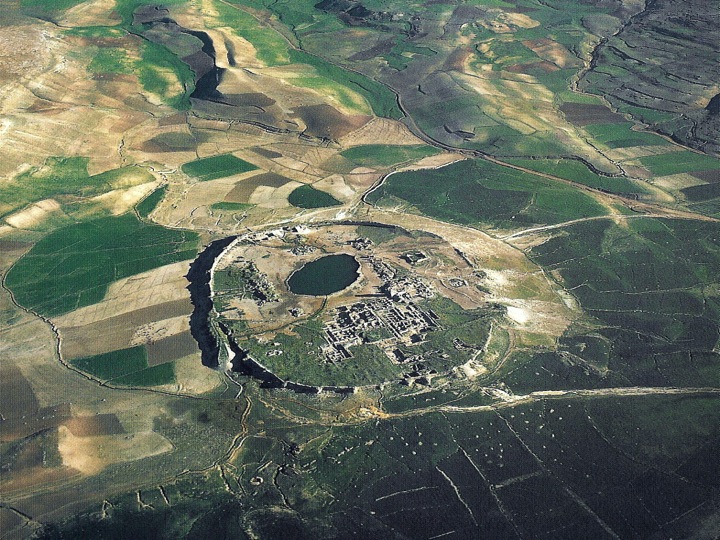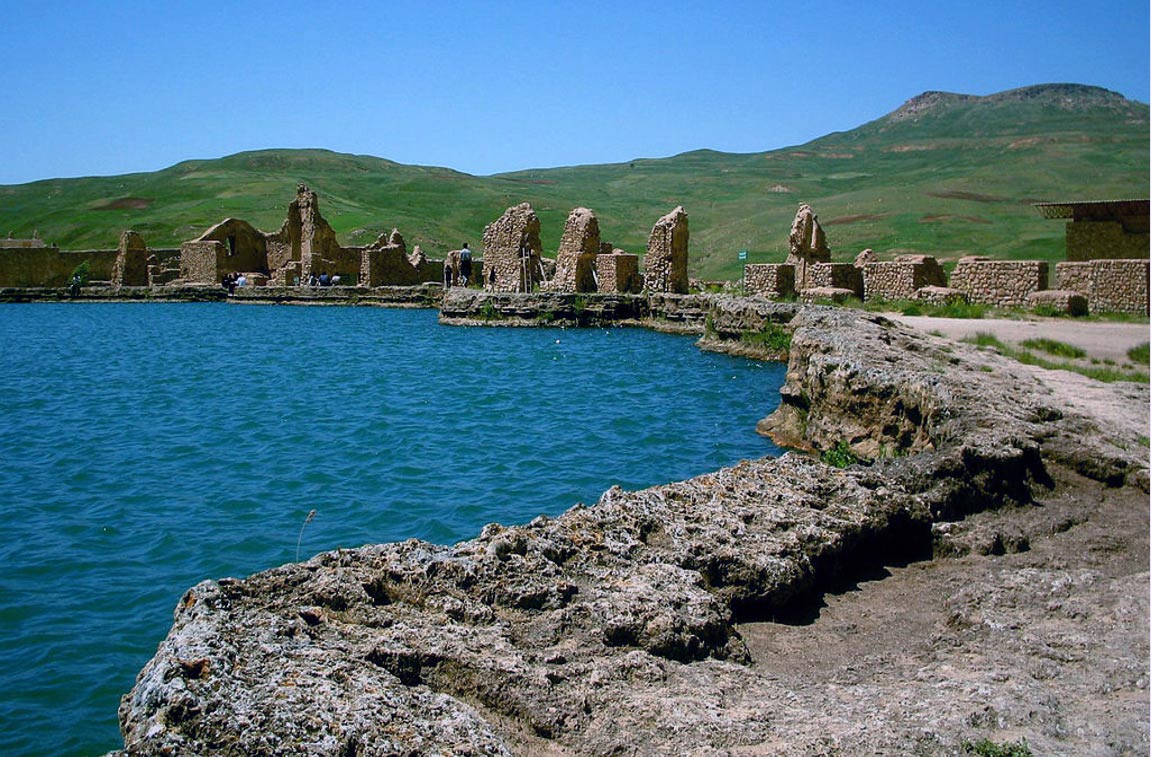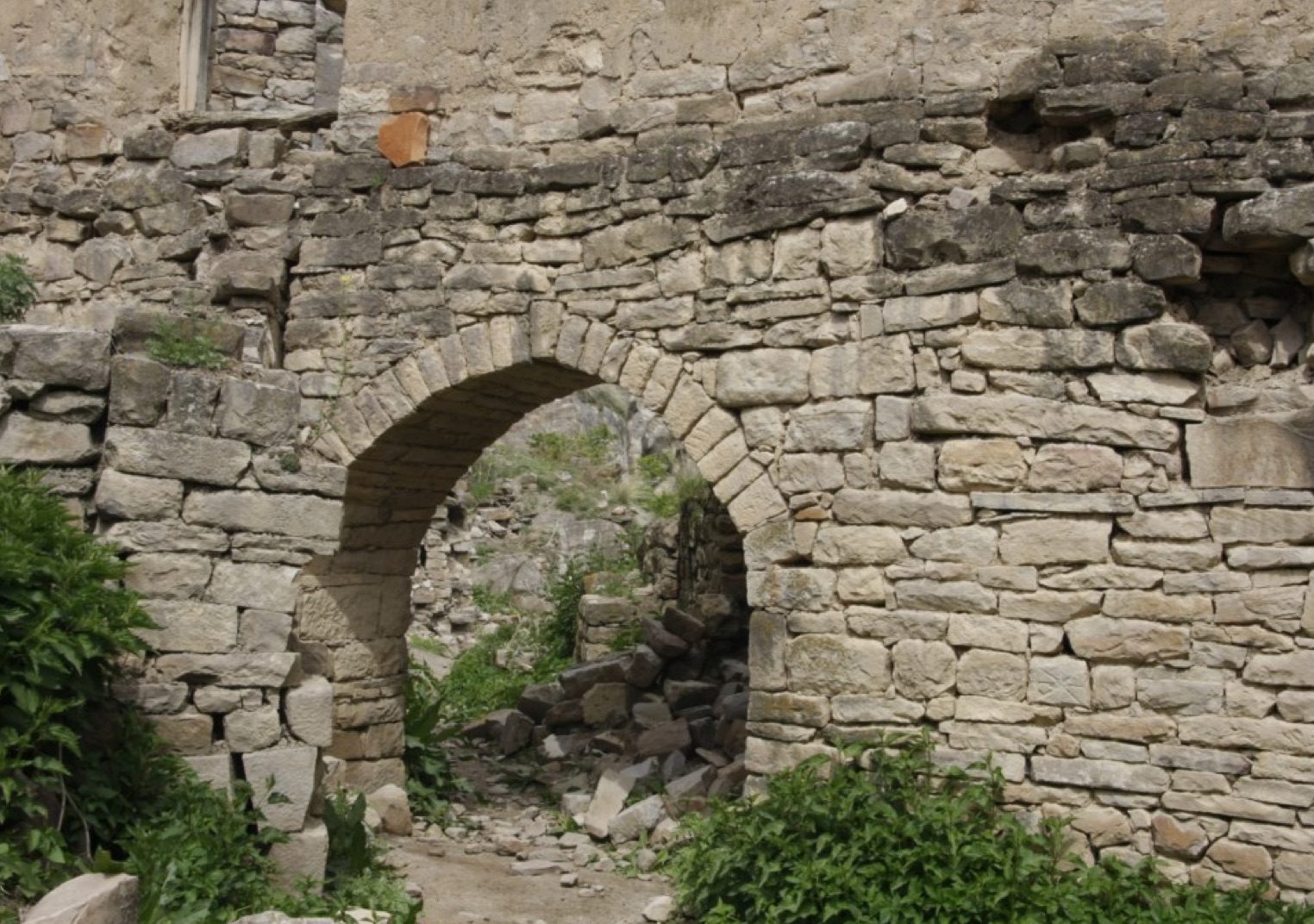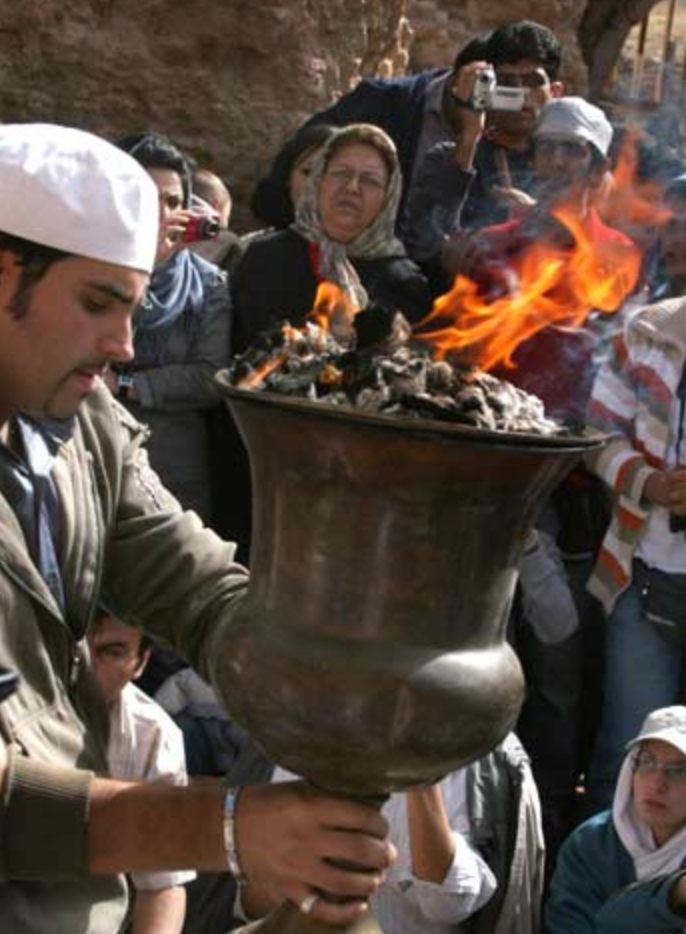The article “The Ancient Site of Takhte Soleyman The version produced below has been slightly edited. Kindly note that excepting one photo, all other images and accompanying captions did not appear in the original Ancient Origins posting. = = = = = = = = = = = = = = = = = = = = = = = = = = = = = = = = = Between the 3rd and 7th centuries CE, Iran was part of the Sassanian Empire, Rome’s great rival in the East. Under this empire, Zoroastrianism was recognized as the state religion, and numerous Zoroastrian sanctuaries were built by the Sassanian rulers as a sign of their piety. One of the most important of these sanctuaries is found at a site known as Takht-e-Soleyman (or Takhte Suleiman). An excellent overview of the site of the site of Ādur-Gushnasp or Shiz (modern-day Takhte Suleiman) (Picture Source: Iran Atlas). The Ādur-Gushnasp sacred fire was dedicated to the Arteshtaran (Elite warriors) of the Sassanian Spah (Modern Persian: Sepah = Army). Takht-e-Soleyman (meaning ‘The Throne of Solomon’) is located in West Azarbaijan province, in the north-west Iran. The site is located in a valley about 2000m (6500ft) above sea level, and is surrounded by mountains. In the middle of the valley is an oval platform rising about 60m above the surrounding plain that measures about 350m by 550m (1150ft by 1800ft). Located on the platform is a lake fed by springs hidden beneath the surface. Saturated with minerals, the water of this lake is neither drinkable nor able to support any life. An ancient volcano, known as Zendan-e-Soleyman (meaning ‘The Prison of Solomon’) is located about 3km to the west of the site. According to folk legend, King Solomon used to imprison monsters inside the 100m deep crater. Given its stunning natural landscape, it is little wonder that Takht-e-Soleyman was perceived as a mystical site by the ancients. A reconstruction of the late Sassanians at Ādur Gušnasp or Shiz (Takht e Suleiman in Azarbaijan, northwest Iran) by Kaveh Farrokh (painting by the late Angus Mcbride) in Elite Sassanian Cavalry-اسواران ساسانی-. To the left rides a chief Mobed (a top-ranking Zoroastrian priest or Magus), General Shahrbaraz (lit. “Boar of the realm”) is situated in the center and Queen Boran (Poorandokht) leads to the right. The region of Takht-e-Soleyman was considered sacred, worship was conducted there even prior to the arrival of the Sassanians. Around the Zendan-e-Soleyman area, the remains of temples and shrines have been discovered. These traces of structures have been dated to the 1st millennium BCE, and are associated with the Manneans, rulers of the region between the 9th and 7th centuries BCE. The volcanic crater was once full of water (but later dried out), a feature that probably attracted the Manneans to build their temples and shrines there. The ruins and crater at Takht-e-Soleyman Throne of Soloman, Iran in 2006 (Source: Ḏḥwty in Ancient Origins). With the arrival of the Sassanians in that region in the 5th century CE, Zendan-e-Soleyman lost its importance to Takht-e-Soleyman. During the middle of the same century, during the reign of Peroz, construction began at the site. In the following century, Takht-e-Soleyman became a royal Zoroastrian sanctuary during the reigns of Khosrow I and Khosrow II. This site became one of the most important sanctuaries in Zoroastrianism as its temple housed the Ādur Gušnasp. This was a sacred fire of the highest order, and one of the three great fires of Zoroastrianism believed to have existed since the dawn of creation. The Sassanians also built a temple to the cult of Anahita, a goddess strongly associated with water, at Takht-e-Soleyman. To defend this important religious site, the Sassanians enclosed the area with a wall 13m (42ft) high, with 38 towers and two entrances – one in the north and another in the south. These defenses were not enough, however, to withstand the Byzantine army that attacked the site in retaliation against Sassanian incursion into their territory. As a result, Takht-e-Soleyman was destroyed in 627 CE. The following centuries were uneventful for Takht-e-Soleyman, and it was inhabited by a peasant population. It was only in the 13th century that the site regained some of its past glory and importance for a brief period. A photograph from the site of ancient Kahib in Daghestan of the Caucasus forwarded by Guseyn Guseynov to Kavehfarrokh.com on March 1, 2015. Note that the above archway at Kahib bears an almost exact resemblance to one of the archways at the ancient Ādur-Gushnasp or Shiz (modern-day Takhte Suleiman) Fire-Temple in Iran’s Azarbaijan province. For more on Kahib see here … By then, the Sassanian Empire was already long gone, and the region was now under the control of the Ilkhanate, a part of the Mongol Empire but would later form a state of its own. During the reign of Abaqa Khan, the second Mongol ruler of the Ilkhanate, the peasants residing in Takht-e-Soleyman were chased out, and a palace was built for the Khan on the foundations of the ancient sanctuary. In addition to new structures, some ancient ones were also reconstructed. Nevertheless, the site was once again abandoned in the middle of the 14th century, following the demise of the Ilkhanate and the subsequent Timurid invasion. The site fell into ruins, and was only rediscovered in the 19th century. In the 20th century, archaeological work was conducted at the site and in 2003 Takht-e-Soleyman was inscribed as a UNESCO World Heritage Site. The Gahanbar ceremony at the Azargoshasb Fire Temple. After the prayers are concluded, a “Damavaz” (a ceremony participants) holds aloft the censer containing fire and incense in his hand to pass around the congregation. As this is done, the Damavaz repeats the Avesta term “Hamazour” (translation: Let us unite in good deeds). Participants first move their hands over the fire and then over their faces: this symbolizes their ambition to unite in good works and the spread of righteousness (Photo Source: Sima Mehrazar).




[Suleiman]” below written by Ḏḥwty was originally posted on the Ancient Origins website on May 24, 2015.



